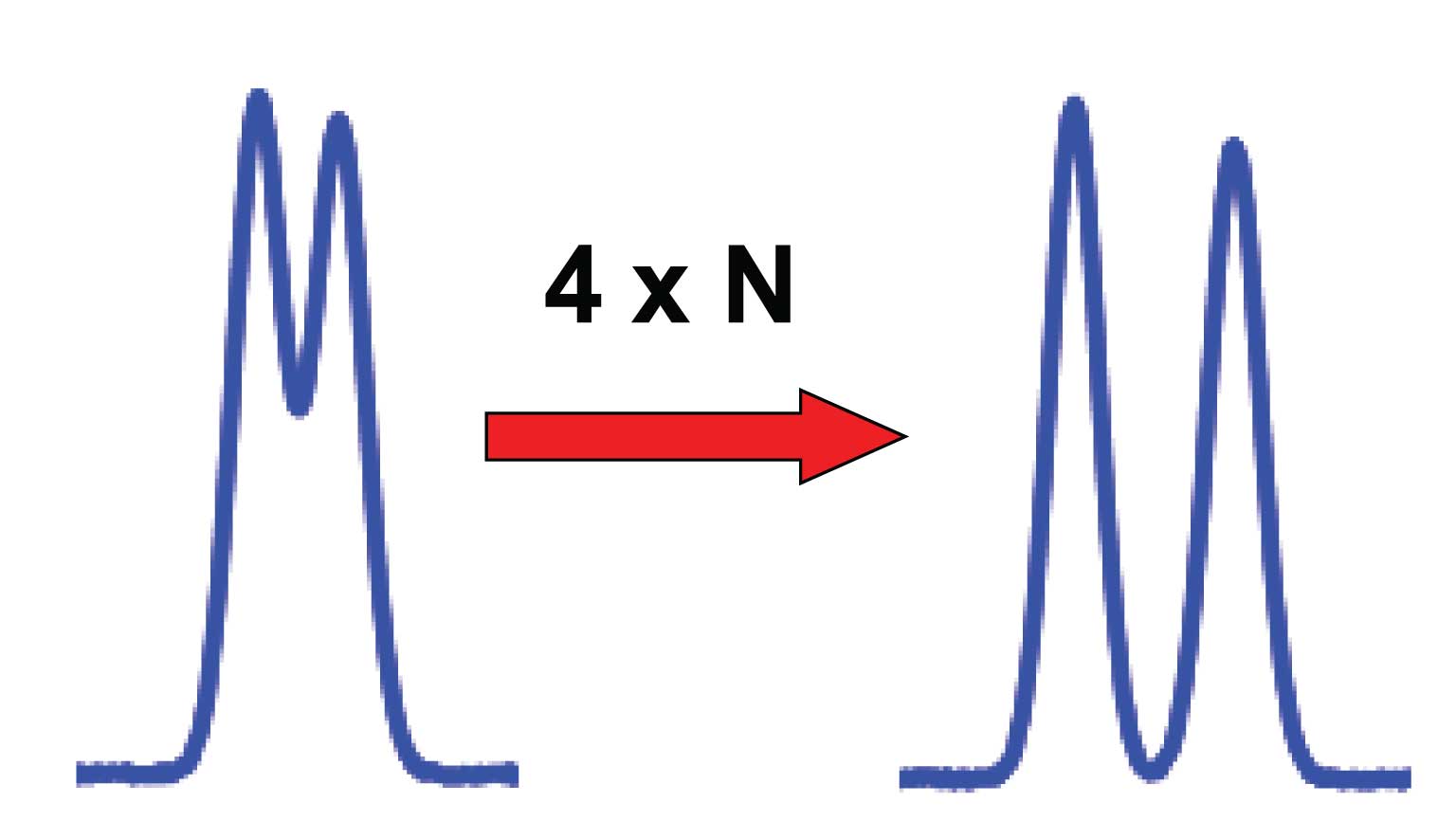In our last Back-to-Basics discussion (#6 Resolution), we looked at the way we measure resolution, Rs, from a chromatogram using the following equation:
Rs = (tR2 – tR1) / ((0.5 * (w1 + w2)) (1)
where t1 and t2 are the retention times of a pair of peaks and w1 and w2 are their corresponding baseline peak widths. This calculation, or a similar equation (equation 2 in #6 Resolution) using widths at half the peak height, is great for reporting resolution values, such as with system suitability measurements, but there is another resolution equation that is more useful in guiding us in the method development process.
What is often called “the fundamental resolution equation,” expresses resolution as
Rs = ¼ (N)0.5 (α-1) (k / [1+k]) (2)
 Figure 1
Figure 1
Where N is the column plate number or efficiency (#4 Efficiency), α is the selectivity (#3 Selectivity), and k is the retention factor (#1 Retention Factor). The utility of this equation cannot be overemphasized, and is the basis of method development software, such as DryLab (Molnar Institut, Berlin) and forms the foundation of the Advanced HPLC Method Development classes that Tom Jupille and I teach to chromatographers worldwide. We’ll look at equation 2 in more detail here and in future HPLC Solutions discussions.
First, let’s look at the influence of the plate number on resolution
Rs = f(N0.5) (3)
We can see that resolution is a function of the square-root of the plate number. You’ll recall that N can be increased most easily by increasing the column length, reducing the particle size, or both. Flow rate has a minor effect on N for samples with molecular weights <1000 Da in real applications, so we won’t consider it here. The square-root function means that if we have a separation like that shown on the left of Figure 1, with resolution of 0.8 and we want baseline resolution of 1.6 (right of Figure 1), we need to increase N by a factor of 4. What will it take to make this change? Perhaps we should hook four columns together in series – an unlikely event, since this will increase both run time and pressure by four-fold, to say nothing of our column budget! Maybe it would make more sense to reduce the particle size? Ahh, switch from 5 µm diameter particles to 1.25 µm particles. Anyone know where to get such particles? … me neither. So the bottom line is that doubling resolution by changing N is not a very practical approach.
This blog article series is produced in collaboration with John Dolan, best known as one of the world’s foremost HPLC troubleshooting authorities. He is also known for his research with Lloyd Snyder, which resulted in more than 100 technical publications and three books. If you have any questions about this article send them to TechTips@sepscience.com
